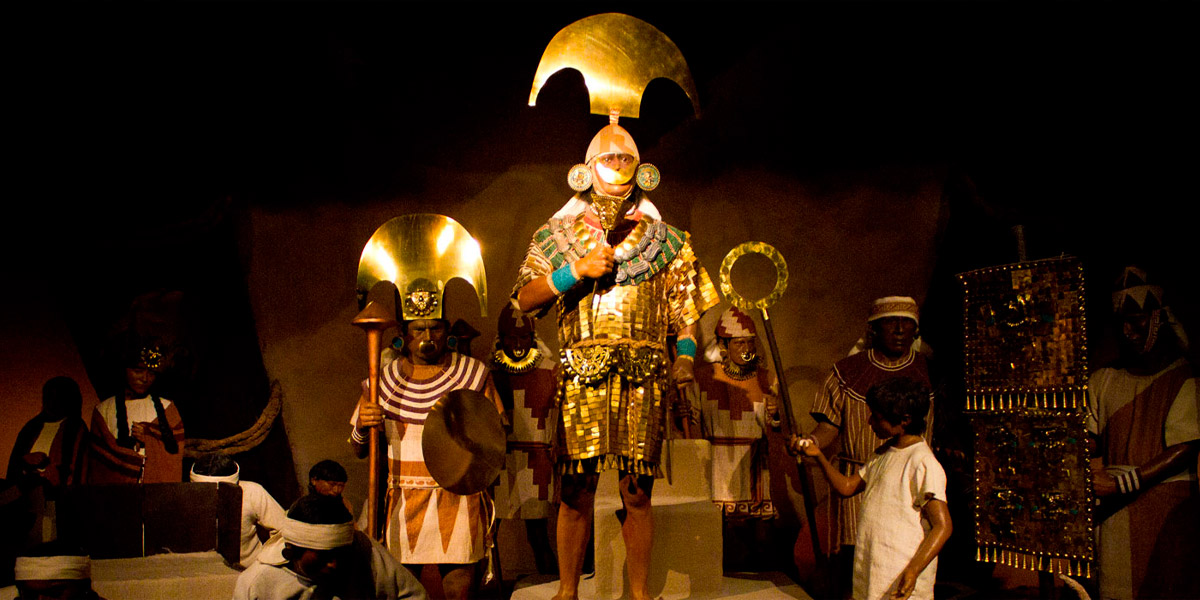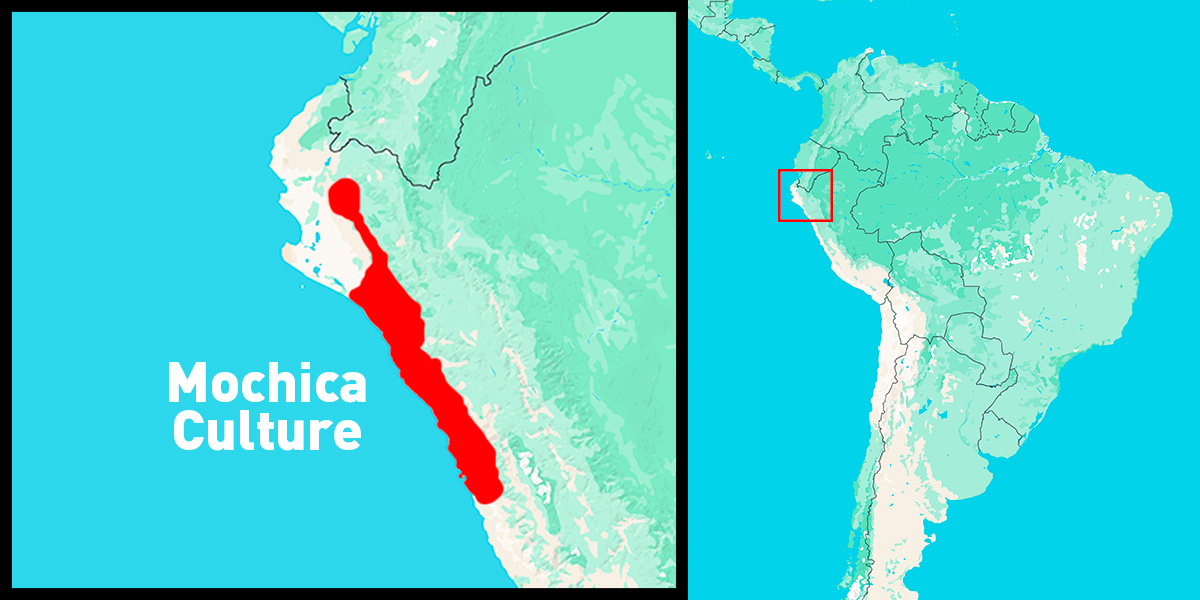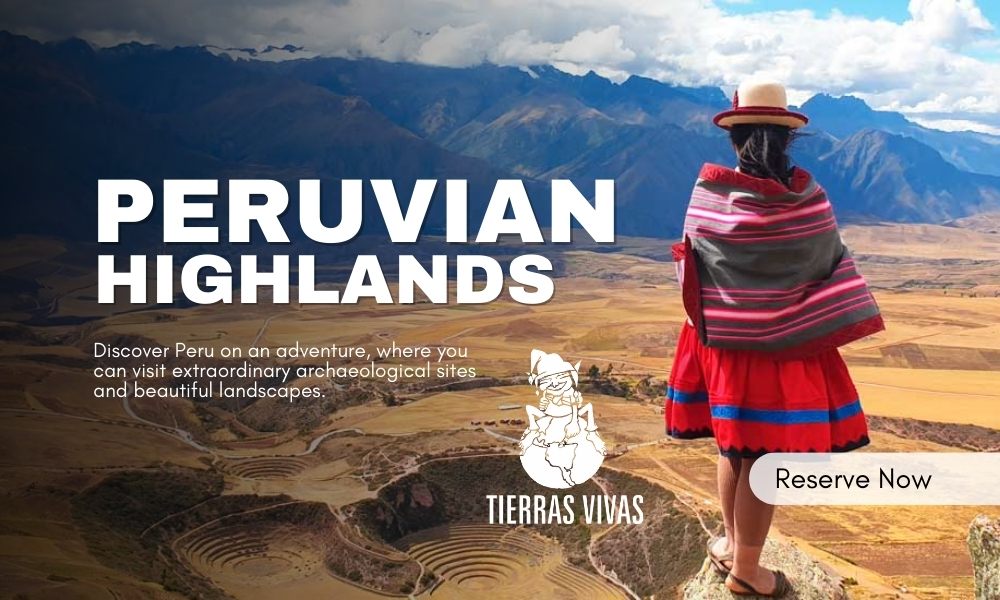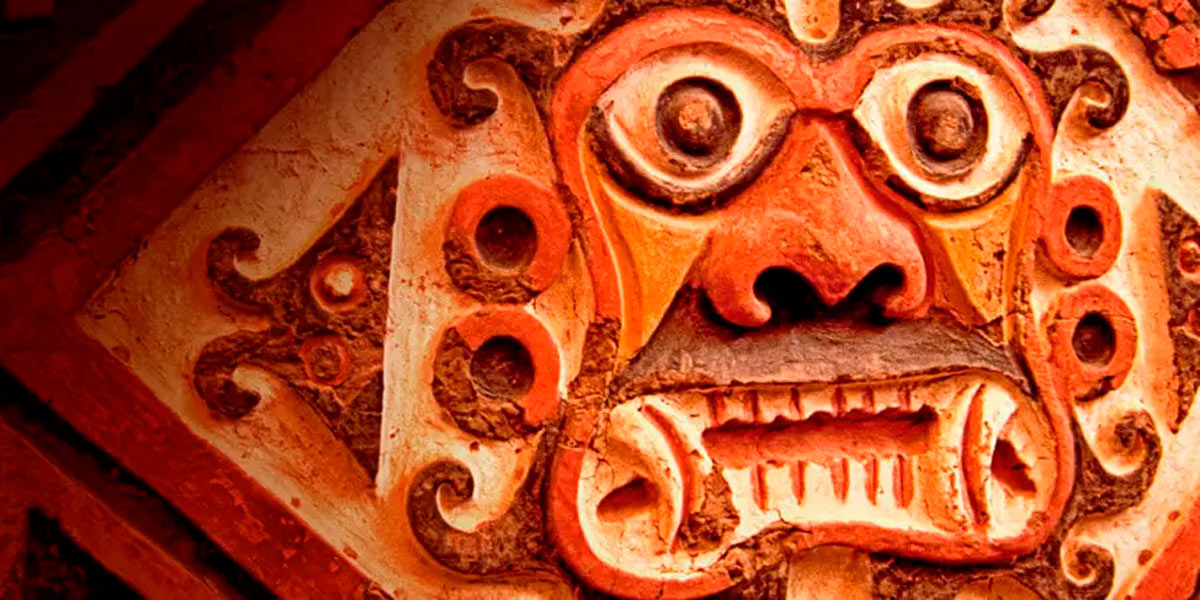The Mochica or Moche Culture, highlighted in its ceramics considered the best in ancient Peru as well as in its architecture represented in the Huaca del Sol y de la Luna, was a South American society, with cities, temples, canals and farms located along the arid coast in a narrow strip between the Pacific Ocean and the Andes Mountains of Peru. The Mochica culture arose in the Early Intermediate, between the years 100 and 800 AD. developing in the north of Peru. The Moche are perhaps best known for their ceramic art: their pots are life-size portraits of individuals' heads (huacos retratos) and three-dimensional representations of animals and people. Many of these pots were looted long ago from Moche sites, which can be found in museums around the world.
Geographic location
The Mochica culture settled on the north coast, between the Lambayeque and Huarmey valleys. It had as its cultural center the valley of Moche and Virú near Trujillo.
Cultural manifestations of the Mochica culture
The artisans of the Mochica culture were the creators of a very special, very complex style, expressed through metallurgy, wall paintings, wooden sculptures, and special ceramics. Moche art is also reflected by the polychromy and/or three dimensions of the clay murals pasted on its public buildings, some of which are open to visitors. These murals depict a wide range of figures and subjects, including warriors and their prisoners, priests, and supernatural beings. The detailed study of the murals and decorated ceramics reveal a lot about the ritual behaviors of the Mochica culture.
-
Ceramics
The most impressive artistic manifestation for its creativity and aesthetic sense. Throughout their history, the potters of the Mochica culture were based on three dimensional deities, human beings, animals and plants. But perhaps, the "Huaco Retrato" was where they achieved the highest ratings. It reached its greatest development in ceramics, with only two colors, characteristics that reflect religious, mythological and daily life scenes; pictorial iconography in pots that show combat, erotic encounters, funerals, human sacrifices, etc. It constitutes the best quality ceramic among all ancient Peruvian cultures, besides being only comparable to Greek ceramics and other cultures of its time. -
Architecture
They did not have an urban planning system, but they left two pyramidal huacas of important colossal dimensions, the "Huaca del Sol" and "Huaca de la Luna" in Moche, near Trujillo, using in their architecture mud adobes that had the greatest manufacturer's mark, and recent discovery of "El Brujo" in which are found architectural and artistic features not well known. Great mastery in the construction of irrigation canals, which are still used in the Chicama Valley. -
Religion
Their main God was Ai apaec, a supernatural being who was represented by a human figure with the mouth of a fanged tiger. One of the most important aspects of the religion of the Mochica culture were human sacrifices. It was a complex ritual in which prisoners of war were offered by a priestess to the most important god Owl. -
Economic Activities
They practiced fishing in "Caballitos de Totora" (a technique that still exists today in Huanchaco and Pimentel). They also demonstrated that they had a great technique in agriculture through the use of irrigation canals to grow food such as cassava, cucumber, corn, lucuma, squash, etc. in the same way in the cattle ranch in which they domesticated auquénidos.

Social and Political Organization
The Moche culture, widespread and diverse in its development, had a highly complex political and social organization. Its system was theocratic, in which the rulers also performed religious functions, combining political power and spiritual authority. Over time and after its decline, the Moche were absorbed by the Chimú people. The discoveries at the archaeological site of Huaca Rajada, especially the tomb of the Lord of Sipán, have allowed many theories about this society to be re-examined.
Administratively, the Moche territory was divided into at least two large regions that maintained constant interaction. Religion, politics, and administration were inseparable: temples and monuments served as administrative, religious, and governmental functions at the same time, reflecting the centrality of power. The Lord of Sipán, for example, symbolized this double role of sovereign and priest.
Regarding the social structure, archaeological studies have identified different types of burials that reflect clear hierarchies:
- Tombs of the ruling elite, such as that of the Lord of Sipán, decorated with high-quality gold, copper, and ceramic objects.
- Common graves, with a moderate amount of goods, corresponding to administrators and artisans linked to power.
- Simple burials, with few offerings, probably belonging to farmers and fishermen, the productive base of Moche society.
Contributions of the Mochica culture
The Mochica culture made great contributions, even to modern society, due to its inventions and innovations for the time. Which are:
- They made innumerable murals, where they captured images and representative figures.
- They built a large canal and irrigation system throughout the desert region.
- Raising animals with high protein content for human consumption.
- Use of organic elements to improve crops.
- Implementation of a large irrigation system to strengthen and improve agriculture.
Why did the Mochica culture end?
The end of the Mochica culture began in the 6th century when a devastating phenomenon destroyed the buildings and architectural fortresses. This natural disaster caused the loss of crops, as well as the pyramids and palaces. As a consequence of the terrible meteorological phenomenon, many of the inhabitants began to fall ill. Due to the weakness that the empire was experiencing, many of the leaders started internal wars, which brought about the end of the Moche empire and civilization in its entirety.
How does the Mochica culture influence today?
This culture currently covers Peru with a great cultural and ancestral legacy, the wonderful artistic and architectural works. Just as engineering and metallurgy make it a fascinating and attractive culture. The ceramic works, the elaboration of murals and other artistic creations allow them to become Cultural Heritage of humanity.
Best Tours in Peru
Many are the routes that take you to Machu Picchu, but none is like the Inca Trail Tours, the most famous pedestrian path in the Americas. After flying from the capital of Perú, Lima, you will arrive in Cusco to walk for four days along a path through forests and dense fog, millenary stone steps and discovering the ruins of ancient fortifications and Inca cities, and all the time enjoying majestic views.
- Peru Adventure Holidays
- Enigmatic Peru
- Peru Full of Adventures
- Peru Luxury Travel
- Peruvian Highlands
- Discover Peru
Inca Trail, Machu Picchu and more
- Salcantay Trek Peru to Machu Picchu 5 days
- Palcoyo Mountain Tour
- Cusco to Manu Tour
- Humantay Lake Day Trip
- Huchuy Qosqo Day Hike
- Llactapata Inca Trail to Machu Picchu
- Apurimac River Rafting
- Vilcabamba Trek to Machu Picchu
- Inti Raymi and Machu Picchu Tour
If you want to visit Machu Picchu, we recommend you to book your Machu Picchu Ticket in advance, so you will enjoy your Vacation in Machu Picchu without any problem.









